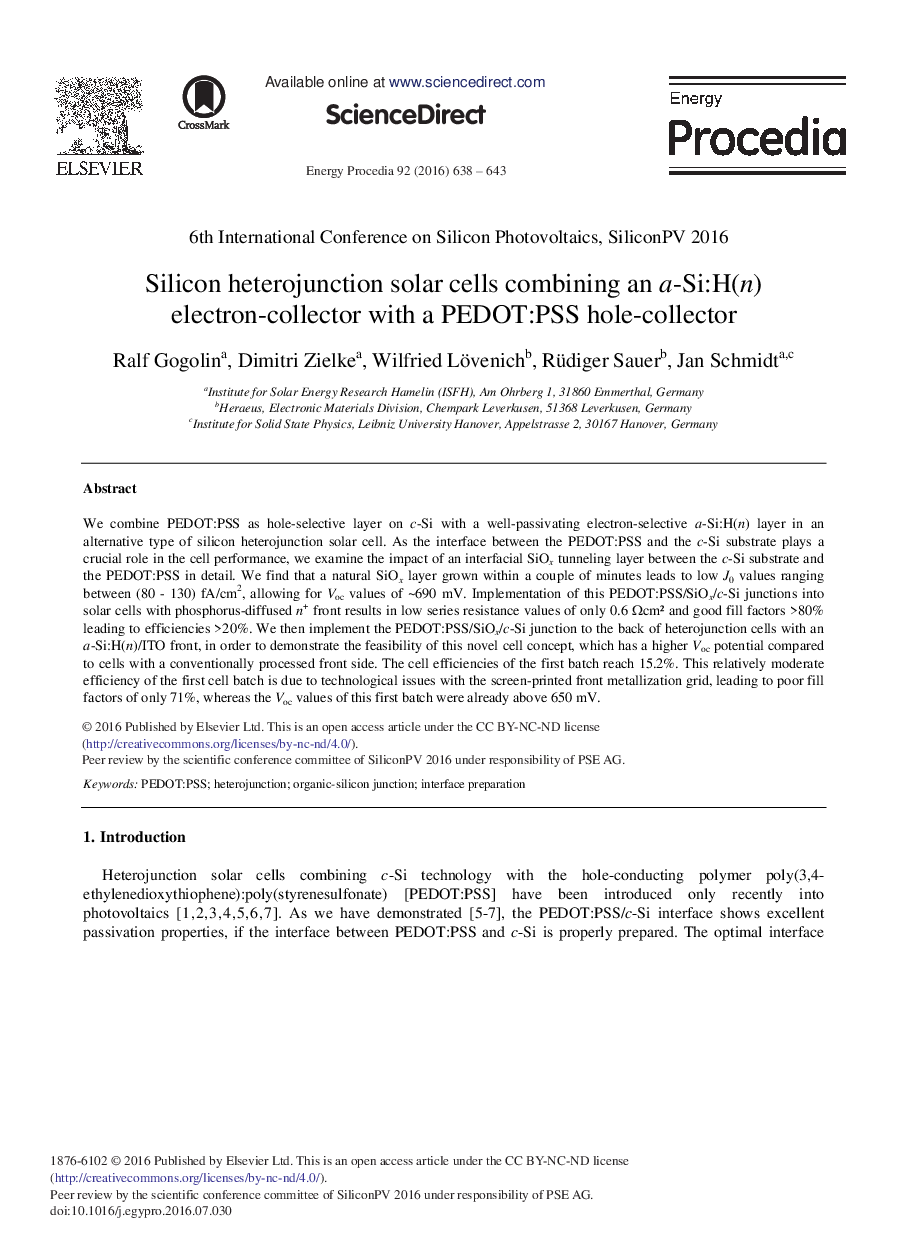| Article ID | Journal | Published Year | Pages | File Type |
|---|---|---|---|---|
| 5446639 | Energy Procedia | 2016 | 6 Pages |
Abstract
We combine PEDOT:PSS as hole-selective layer on c-Si with a well-passivating electron-selective a-Si:H(n) layer in an alternative type of silicon heterojunction solar cell. As the interface between the PEDOT:PSS and the c-Si substrate plays a crucial role in the cell performance, we examine the impact of an interfacial SiOx tunneling layer between the c-Si substrate and the PEDOT:PSS in detail. We find that a natural SiOx layer grown within a couple of minutes leads to low J0 values ranging between (80 - 130) fA/cm2, allowing for Voc values of â¼690 mV. Implementation of this PEDOT:PSS/SiOx/c-Si junctions into solar cells with phosphorus-diffused n+ front results in low series resistance values of only 0.6 Ωcm2 and good fill factors >80% leading to efficiencies >20%. We then implement the PEDOT:PSS/SiOx/c-Si junction to the back of heterojunction cells with an a-Si:H(n)/ITO front, in order to demonstrate the feasibility of this novel cell concept, which has a higher Voc potential compared to cells with a conventionally processed front side. The cell efficiencies of the first batch reach 15.2%. This relatively moderate efficiency of the first cell batch is due to technological issues with the screen-printed front metallization grid, leading to poor fill factors of only 71%, whereas the Voc values of this first batch were already above 650 mV.
Related Topics
Physical Sciences and Engineering
Energy
Energy (General)
Authors
Ralf Gogolin, Dimitri Zielke, Wilfried Lövenich, Rüdiger Sauer, Jan Schmidt,
